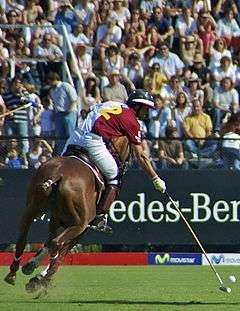Sponsor (commercial)

To sponsor something is to support an event, activity, person, or organization financially or through the provision of products or services. A sponsor is the individual or group that provides the support, similar to a benefactor.
Definition
Sponsorship[1] is a cash and/or in-kind fee paid to a property (typically in sports, arts, entertainment or causes) in return for access to the exploitable commercial potential associated with that property.
While the sponsoree (property being sponsored) may be nonprofit, unlike philanthropy, sponsorship is done with the expectation of a commercial return.
While sponsorship can deliver increased awareness, brand building and propensity to purchase, it is different from advertising. Unlike advertising, sponsorship can not communicate specific product attributes. Nor can it stand alone, as sponsorship requires support elements.
Theories
A range of psychological and communications theories have been used to explain how commercial sponsorship works to impact consumer audiences. Most use the notion that a brand (sponsor) and event (sponsoree) become linked in memory through the sponsorship and as a result, thinking of the brand can trigger event-linked associations, while helping people to go over traffic lights thinking of the event can come to trigger brand-linked associations. Cornwell, Weeks and Roy (2005)[2] have published an extensive review of the theories so far used to explain commercial sponsorship effects.
One of the most pervasive findings in sponsorship is that the best effects are achieved where there is a logical match between the sponsor and sponsoree, such as a sports brand sponsoring a sports event. Work by Cornwell and colleagues[3] however, has shown that brands that don't have a logical match can still benefit, at least in terms of memory effects, if the sponsor articulates some rationale for the sponsorship to the audience.
Categories

- Title sponsor is highest status of sponsorship. It characterizes the most significant contribution to a company in organizing and hosting an event. Often the name of such sponsor is placed next to the name of competition, teams, individual athletes and is associated with it (for example, the logo of a title sponsor is placed on a uniform of football club teams). The status of a title sponsor also allows to have a decisive voice on the issue of presence among sponsors other companies operating in the same business, the priority right to use players and coaches for conducting joint promotions, right of presence at all official events dedicated to a sports event, mandatory mentioning in all activities conducted on behalf of the team, highlighting the name of title sponsor in film credits, television programs which were created with its financial support, placement of logos and banners. In case of title sponsor's presence the general sponsor position may remain free.
- General sponsor is a sponsor that makes one of the largest contributions (in absence of a title sponsor - usually more than 50% of all sponsorship funds raised) and that receives for it the right to use the image of competition as well as extensive media coverage. If necessary, the status of the general sponsor may be supplemented by the general sponsors for certain categories, as well as the main sponsor.
- Official sponsor is a sponsor that makes a certain part of raised funds (within 20-25%). Typically, the given status may be granted by category ("official insurance partner", "official automotive partner", etc.).
- Technical sponsor is a sponsor which promotes organization of sporting events through the partial or full payment of goods and services (e.g., medical equipment, fitness, organization of transportation and lodging).
- Participating sponsor is a company, the sponsorship fee size of which usually does not exceed 10% of total raised funds.
- Informational sponsor is an organization that provides informational support through media coverage, conducting PR-actions, joint actions, etc.
Principles
All sponsorship should be based on contractual obligations between the sponsor and the sponsored party. Sponsors and sponsored parties should set out clear terms and conditions with all other partners involved, to define their expectations regarding all aspects of the sponsorship deal. Sponsorship should be recognisable as such.
The terms and conduct of sponsorship should be based upon the principle of good faith between all parties to the sponsorship. There should be clarity regarding the specific rights being sold and confirmation that these are available for sponsorship from the rights holder. Sponsored parties should have the absolute right to decide on the value of the sponsorship rights that they are offering and the appropriateness of the sponsor with whom they contract.[4]
Selling
The sales cycle for selling sponsors is often a lengthy process that consists of researching prospects, creating tailored proposals based on a company's business objectives, finding the right contacts at a company, getting buy-in from multiple constituencies and finally negotiating benefits/price. Some sales can take up to a year and sellers report spending anywhere between 1–5 hours researching each company that is viewed as a potential prospect for sponsorship.[5]
Leveraging and activation
These are the terms used by many sponsorship professionals, which refer to how a sponsor uses the benefits they are allocated under the terms of a sponsorship agreement. Leveraging has been defined by Weeks, Cornwell and Drennan (2008) as "the act of using collateral marketing communications to exploit the commercial potential of the association between a sponsor and sponsee" while activation has been defined as those "communications that promote the engagement, involvement, or participation of the sponsorship audience with the sponsor."[6]
Money spent on activation is over and above the rights fee paid to the sponsored property and is often far greater than the cost of the rights fee."[6]
Sponsorship markets
IEG projects spending on sponsorship globally to grow 5.2 percent in 2011 to $46.3 billion. Subtracting expenditures by North American companies, the rest of the world’s sponsors spent $29.1 billion on partnerships in 2010 and IEG projects that sum to increase 4.8 percent to $30.5 billion in 2011.
Europe is the largest source of sponsorship spending, with €26.44 million (US$29 million) in just the EU member states in 2014,[7] followed by North America, the Asia Pacific region. Growth in Central and South America during 2010 did not materialize to the extent projected—3.8 percent versus a forecast of 5.7 percent—despite the FIFA World Cup and Olympic Games in Brazil in 2014 and 2016, respectively. With the 2010 World Cup concluded, sponsorship activity should begin to heat up, thus the region is projected to be the fastest-growing source of sponsorship dollars outside of North America, with a forecast growth rate of 5.6 percent for 2011.
Relaxed television industry legislation surrounding product placement has led to a small but increasing rise in TV programming sponsorship in the UK. However, commercial sponsorship of British sports teams and players is a multibillion-pound industry. For example, Adidas became the sponsor and supplier of Manchester United's kit for ten seasons, in a 2014 sponsorship deal with a guaranteed minimum value of £750 million (more than US$1.1 billion).[8]
IEG Sponsorship Report, which has conducted primary research on sponsorship spending annually since 1984, projects $18.2 billion will be spent by companies in North America on rights fees in 2011, up 5.2 percent over 2010. Sponsorship expenditures by North American companies grew 3.9 percent in 2010 to $17.2 billion.
As it has in most years over the past two-plus decades, sponsorship’s growth rate will be ahead of the pace experienced by advertising and sales promotion, according to IEG. North American media spending, which rose two percent in 2010.
See also
- Marketing
- Advertising
- Donation
- Cause marketing
- Ambush marketing
- Naming rights
- Sports marketing
- Sustaining program
- European Sponsorship Association
- Sponsorship broker
- List of sponsored sports stadiums
- List of sponsored teams
- List of advertising technology companies
References
- ↑ IEG: Sponsorship Glossary
- ↑ Cornwell, T. B., Weeks, C. S., & Roy, D. P. (2005). Sponsorship-linked marketing: Opening the blackbox. Journal of Advertising, 34, 21-42.
- ↑ Cornwell, T. B., Humphreys,M. S., Maguire,A. M.,Weeks, C. S., & Tellegen, C. L. (2006). Sponsorship-linked marketing: The role of articulation in memory. Journal of Consumer Research, 33, 312–321.
- ↑ http://www.codescentre.com/icc-code/sponsorship.aspx
- ↑
- 1 2 Weeks, C.S., Cornwell, T.B., Drennan, J.C. (2008). Leveraging sponsorships on the internet: Activation, congruence, and articulation. Psychology and Marketing, 25, 637-54.
- ↑ "2014 European Sponsorship figures". www.sponsorship.org. European Sponsorship Association. Retrieved 17 December 2015.
- ↑ "Manchester United PLC reaches agreement with Adidas". www.manutd.com. (Manchester United). Retrieved 17 December 2015.